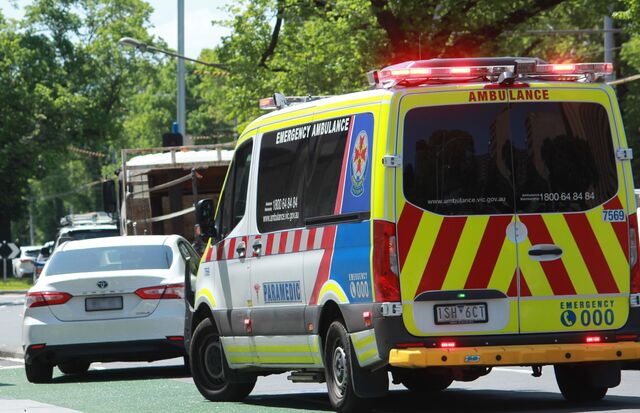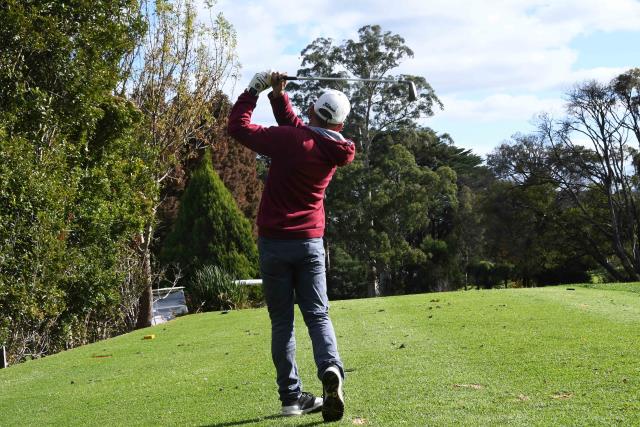The average ambulance response times have been released for the last quarter of 2024/25, with mixed results in the Outer East.
Ambulance Victoria (AV) crews responded to 98,874 Code 1 incidents (requiring urgent paramedic and hospital care) between April 1 and June 30 2025, with official targets aiming to attend to these within 15 minutes for 85 per cent of incidents state-wide and within 15 minutes for 90 per cent in centres with populations greater than 7500.
AV‘s acting executive director of regional operations Michael Georgiou said demand for ‘lights and sirens’ ambulances fell by 3.5 per cent between April and June, compared with the same time last year, coinciding with an AV community information campaign to save paramedics for emergencies.
“April to June last year was AV’s busiest three months on record – with 102,419 Code 1 emergencies,” he said.
“I thank our highly skilled paramedics and first responders who do a remarkable job providing best care to their communities, each and every day,”
“We’re grateful to Victorians who are choosing to use alternative care for non-urgent issues — it means ambulances are available faster for emergencies. That community effort is helping us save lives.”
Here’s how response times have changed since the same time last year and the last quarter in our local government areas:
In the Yarra Ranges, 52.5 per cent of the 2045 Code 1 incidents were responded to within 15 minutes, with an average response time of 17 minutes and 51 seconds. This is an improvement from the same time last year (49.7 per cent of 2141 incidents, 18 minutes and 10 seconds) but worse than the previous quarter (54.7 per cent of 2012 incidents, 17 minutes and 19 seconds).
In Maroondah, 69.6 per cent of the 1595 Code 1 incidents were responded to within 15 minutes, with an average response time of 15 minutes and three seconds. This is worse than both the same time last year (71.8 per cent of 1610 incidents, 14 minutes and seven seconds) and the previous quarter (71.6 per cent of 1548 incidents, 14 minutes and 18 seconds).
In Knox, 69.2 per cent of the 2071 Code 1 incidents were responded to within 15 minutes, with an average response time of 14 minutes and 43 seconds. This is an improvement from the same time last year (67.6 per cent of 2104 incidents, 14 minutes and 57 seconds) but worse than the previous quarter (72.1 per cent of 1963 incidents, 13 minutes and 55 seconds).
In Cardinia, 55.6 per cent of the 1661 Code 1 incidents were responded to within 15 minutes, with an average response time of 17 minutes and four seconds. This is an improvement from both the same time last year (50.2 per cent of 1814 incidents, 18 minutes and 21 seconds) and the previous quarter (54 per cent of 1615 incidents, 17 minutes and 18 seconds).
Mr Georgiou said from April to June 2025, the state-wide average response time to Code 1 emergencies was 15 minutes and 27 seconds – down from 15 minutes and 37 seconds a year ago.
“There has also been an improvement in the percentage of Code 1 cases responded to within 15 minutes,” he said.
“We’ve already seen a 3.7 per cent jump in Code 1 demand since the first three months of 2025, winter is always our busiest time. Our paramedics are focused on reaching the sickest patients first — but every day, more than 500 calls to Triple Zero (000) don’t need an emergency ambulance.”
“There are many options people can access when they need timely medical care and health advice but don’t need an emergency ambulance, including the Victorian Virtual Emergency Department and Urgent Care Clinics.”
During the most recent quarter, AV crews across Victoria responded to 65.3 per cent of Code 1 cases within the state-wide target of 15 minutes, up from 64.2 per cent a year ago, but slightly down from 65.6 per cent in the three months prior.
In the Metropolitan Region crews responded to 69,275 Code 1 cases between April and June 2025, down from 71,907 last year, but up from 66,442 three months ago.
Compared with the same time last year, performance improved in 53 of the 79 Local Government Areas (LGAs).
Mr Georgiou said the new Standards for Safe and Timely Ambulance and Emergency Care are already making a difference — improving patient flow in hospitals and helping our crews get back on the road sooner.
“Our expert Secondary Triage team — made up of nurses and paramedics — plays a vital role by connecting people with the right care and freeing up ambulances for life-threatening emergencies. Between April and June alone, they redirected 46,015 non-urgent cases away from an emergency response,” he said.
“And our Medium Acuity Transport Service (MATS) crews dedicated for less-urgent calls have attended more than 100,000 cases since starting in September 2021, freeing up more ambulances to respond to the most critically-ill patients,”
“We’re grateful to our hospital partners for their efforts — it’s helping us reach more patients, faster.
117 new graduate paramedics have joined Ambulance Victoria since June and earlier this year, the largest-ever single intake of 30 Mobile Intensive Care Ambulance (MICA) intern paramedics were also employed.







